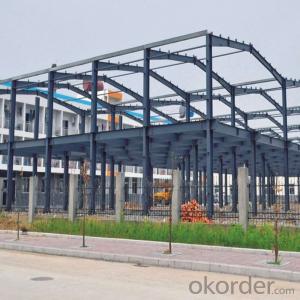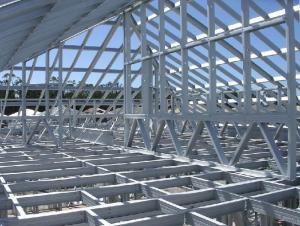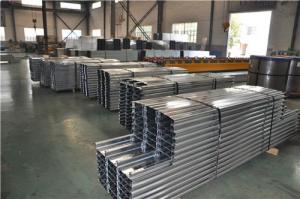11.08KG/M Steel flat bar for construction
- Loading Port:
- Tianjin
- Payment Terms:
- TT or LC
- Min Order Qty:
- 10000 m.t.
- Supply Capability:
- 10000 m.t./month
OKorder Service Pledge
OKorder Financial Service
You Might Also Like
Product Description:
OKorder is offering 11.08KG/M Steel flat bar for construction at great prices with worldwide shipping. Our supplier is a world-class manufacturer of steel, with our products utilized the world over. OKorder annually supplies products to European, North American and Asian markets. We provide quotations within 24 hours of receiving an inquiry and guarantee competitive prices.
Product Applications:
11.08KG/M Steel flat bar for construction are ideal for structural applications and are widely used in the construction of buildings and bridges, and the manufacturing, petrochemical, and transportation industries.
Product Advantages:
OKorder's 11.08KG/M Steel flat bar for construction are durable, strong, and resist corrosion.
Main Product Features:
· Premium quality
· Prompt delivery & seaworthy packing (30 days after receiving deposit)
· Corrosion resistance
· Can be recycled and reused
· Mill test certification
· Professional Service
· Competitive pricing
Product Specifications:
Specifications
1) . Easy to install, fire proof, good insulation
2). Certification: ISO9001:2000, SGS Standard.
Steel Structure Warehouse:
1.The steel structure of the connection method: welding connection
2.Steel structure design common norms are as follows: "Steel Design Code" (GB50017-2003) Cold-formed steel structure technical specifications" (GB50018-2002) "Construction Quality Acceptance of Steel" (GB50205-2001) "Technical Specification for welded steel structure" (JGJ81-2002, J218-2002) "Technical Specification for Steel Structures of Tall Buildings" (JGJ99-98)
3.The characteristics of steel Light weight steel structure Higher reliability of steel work Steel anti-vibration (earthquake), impact and good Steel structure for a higher degree of industrialization Steel can be assembled quickly and accurately Large steel interior space Likely to cause sealing structure Steel corrosive Poor fire-resistant steel Recyclable steel shorter duration
4.Commonly used steel grades and performance of steel Carbon
structural steel: Q195, Q215, Q235, Q255, Q275, etc.
High-strength low-alloy structural steel Quality carbon structural steel and alloy structural steel Special purpose steel Product Feature Carport, House, Office, Shop, Toilet, Villa, Warehouse, Workshop, Plant Other Information
Products have been all over the country more than 20 provinces, municipalities and autonomous regions, and have been exported to Europe, North America, the Middle East, Africa, Asia and other countries and regions, the widespread use
Welcome to our factory, we assure that our products will satisfy your needs with designs, competitive performance price ratio and best services.
FAQ:
Q1: Why buy Materials & Equipment from OKorder.com?
A1: All products offered byOKorder.com are carefully selected from China's most reliable manufacturing enterprises. Through its ISO certifications, OKorder.com adheres to the highest standards and a commitment to supply chain safety and customer satisfaction.
Q2: How do we guarantee the quality of our products?
A2: We have established an advanced quality management system which conducts strict quality tests at every step, from raw materials to the final product. At the same time, we provide extensive follow-up service assurances as required.
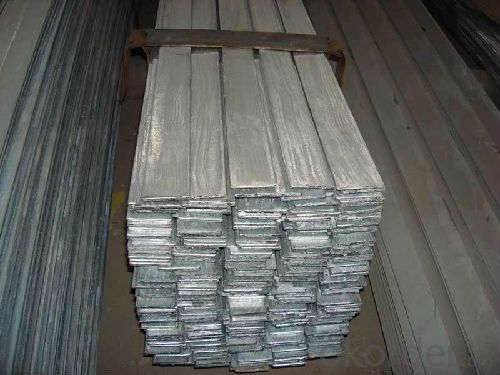
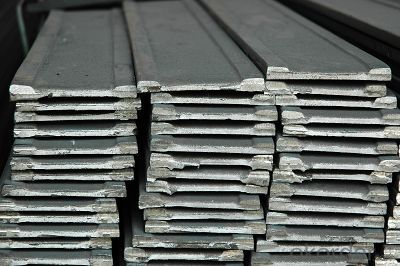
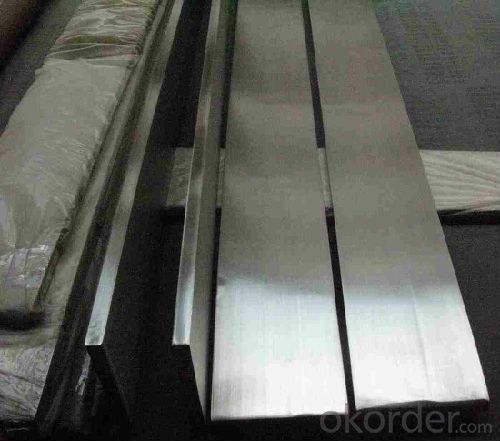
- Q:How are steel structures designed for retail stores and shopping malls?
- Steel structures for retail stores and shopping malls are typically designed by architects and structural engineers. The design process involves assessing the specific needs and requirements of the building, considering factors such as load-bearing capacity, aesthetics, and functionality. The architects create the initial design concept, while the structural engineers analyze and determine the most suitable steel frame system, taking into account factors like wind and seismic loads. They also ensure that the steel structure supports the overall building design and layout, allowing for flexible retail spaces and efficient construction.
- Q:How are steel structures designed for seismic resistance?
- Steel structures are designed for seismic resistance by incorporating various design strategies and techniques. First, steel buildings are designed to be flexible, allowing them to absorb and dissipate the energy generated during an earthquake. This is achieved by using ductile materials and connections that can deform without collapsing. Secondly, steel structures are designed with redundancy and strong connections to ensure that load is distributed evenly throughout the structure. This helps prevent localized failures and ensures that the structure can withstand the lateral forces induced by an earthquake. Additionally, seismic design codes and guidelines are followed to determine the appropriate level of seismic resistance required for a specific location. These codes take into account factors such as the seismic hazard level, soil conditions, and expected ground motion to ensure that the steel structure can withstand the anticipated earthquake forces. Overall, the design of steel structures for seismic resistance involves a combination of flexibility, redundancy, and adherence to seismic design codes to ensure the safety and integrity of the structure during an earthquake.
- Q:How are steel structures analyzed for load calculations?
- Various methods and techniques are utilized to analyze steel structures for load calculations, ensuring their strength and safety. One widely employed technique is finite element analysis (FEA), which breaks down the structure into smaller elements and examines the stresses and deformations within each element. FEA takes into account factors like material properties, geometry, and boundary conditions to make accurate predictions regarding the structure's behavior under different load scenarios. Considering the different types of loads that the structure will face is also essential in load calculations for steel structures. These loads encompass dead loads (the structure's own weight), live loads (such as people and furniture), wind loads, snow loads, and seismic loads. Each load type is examined separately, and their combined effects are taken into consideration to determine the overall load on the structure. Aside from FEA, engineers may employ other analytical methods like the method of sections. This approach involves dividing the structure into sections and analyzing the equilibrium of forces within each section. Engineers may also conduct hand calculations using formulas and equations derived from principles of structural analysis. To ensure the accuracy of load calculations, engineers rely on industry codes and standards such as the AISC Manual of Steel Construction and the IBC. These codes provide guidelines and formulas for determining the design loads and load combinations that steel structures should be able to withstand. In summary, the analysis of steel structures for load calculations involves a combination of advanced computer simulations, analytical methods, and adherence to industry standards. This comprehensive approach guarantees that the steel structure is designed to withstand the anticipated loads and offers a secure and dependable solution for its intended purpose.
- Q:10 meters span, from 1 meters high slope, need to use the big beam? What size of steel is welded?
- Ten meters span is single or double slope slope, single slope, the slope is 10%, double slope, the slope is 20%, but such small span steel, direct line, speed, although the steel key, but processing simple labor costs.
- Q:What are the key considerations in the design of steel structures for retail facilities?
- The key considerations in the design of steel structures for retail facilities include the load-bearing capacity of the structure to support heavy fixtures and equipment, the flexibility to accommodate future expansions or reconfigurations, the durability and resistance to fire and other hazards, the integration of HVAC and electrical systems, and the aesthetic appeal to create an inviting and visually appealing retail space. Additionally, the design should prioritize cost-effectiveness, energy efficiency, and sustainability to ensure long-term viability and profitability.
- Q:Steel structure workshop and equipment have static electricity is how?
- Steel structure plant and equipment rarely appear static savings phenomenon, this is because the steel structure and equipment are connected to the shell, and the metal is a good conductor, static steel structure ought to be able to pass into the ground.
- Q:How are steel structures used in power plants?
- Steel structures are extensively used in power plants for various purposes. They provide structural support for heavy equipment and machinery, such as turbines, boilers, and generators. Steel frames and beams ensure the stability and safety of these structures. Additionally, steel is used in constructing platforms, walkways, and staircases, facilitating easy access for maintenance and operation activities. The durability and strength of steel make it an ideal choice for power plant construction, ensuring long-lasting and reliable infrastructure.
- Q:How are steel structures designed for different healthcare systems?
- Steel structures for healthcare systems are designed with specific considerations to meet the unique needs of each system. Factors such as building codes, functionality, space requirements, and safety regulations are taken into account. The design process involves collaboration between architects, engineers, and healthcare professionals to ensure that the steel structures are efficient, durable, and adaptable to the evolving demands of the healthcare industry.
- Q:What are the considerations for steel structure design in high-temperature environments?
- When designing steel structures for high-temperature environments, several considerations need to be taken into account. Firstly, the type of steel used must have a high melting point and good resistance to thermal expansion and corrosion. Additionally, the structural design should incorporate proper insulation and ventilation systems to prevent heat transfer and ensure safe working conditions. Fire protection measures, such as fire-resistant coatings or fireproofing materials, should also be implemented to enhance the steel structure's resistance to high temperatures. Moreover, the structural design should account for potential thermal stresses and strains that may occur due to temperature differentials. Overall, careful consideration of material selection, insulation, ventilation, fire protection, and thermal stress analysis are crucial in designing steel structures for high-temperature environments.
- Q:What is the role of steel in environmental and sustainable buildings?
- Steel plays a crucial role in environmental and sustainable buildings due to its high strength-to-weight ratio, recyclability, and durability. It is commonly used as a structural material, allowing for lighter and more efficient building designs, which reduces material consumption and transportation emissions. Additionally, steel can be recycled repeatedly without losing its quality, making it a sustainable choice. Its durability ensures longevity, reducing the need for frequent repairs or replacements, ultimately minimizing waste generation.
1. Manufacturer Overview |
|
|---|---|
| Location | |
| Year Established | |
| Annual Output Value | |
| Main Markets | |
| Company Certifications | |
2. Manufacturer Certificates |
|
|---|---|
| a) Certification Name | |
| Range | |
| Reference | |
| Validity Period | |
3. Manufacturer Capability |
|
|---|---|
| a)Trade Capacity | |
| Nearest Port | |
| Export Percentage | |
| No.of Employees in Trade Department | |
| Language Spoken: | |
| b)Factory Information | |
| Factory Size: | |
| No. of Production Lines | |
| Contract Manufacturing | |
| Product Price Range | |
Send your message to us
11.08KG/M Steel flat bar for construction
- Loading Port:
- Tianjin
- Payment Terms:
- TT or LC
- Min Order Qty:
- 10000 m.t.
- Supply Capability:
- 10000 m.t./month
OKorder Service Pledge
OKorder Financial Service
Similar products
New products
Hot products
Hot Searches
Related keywords
